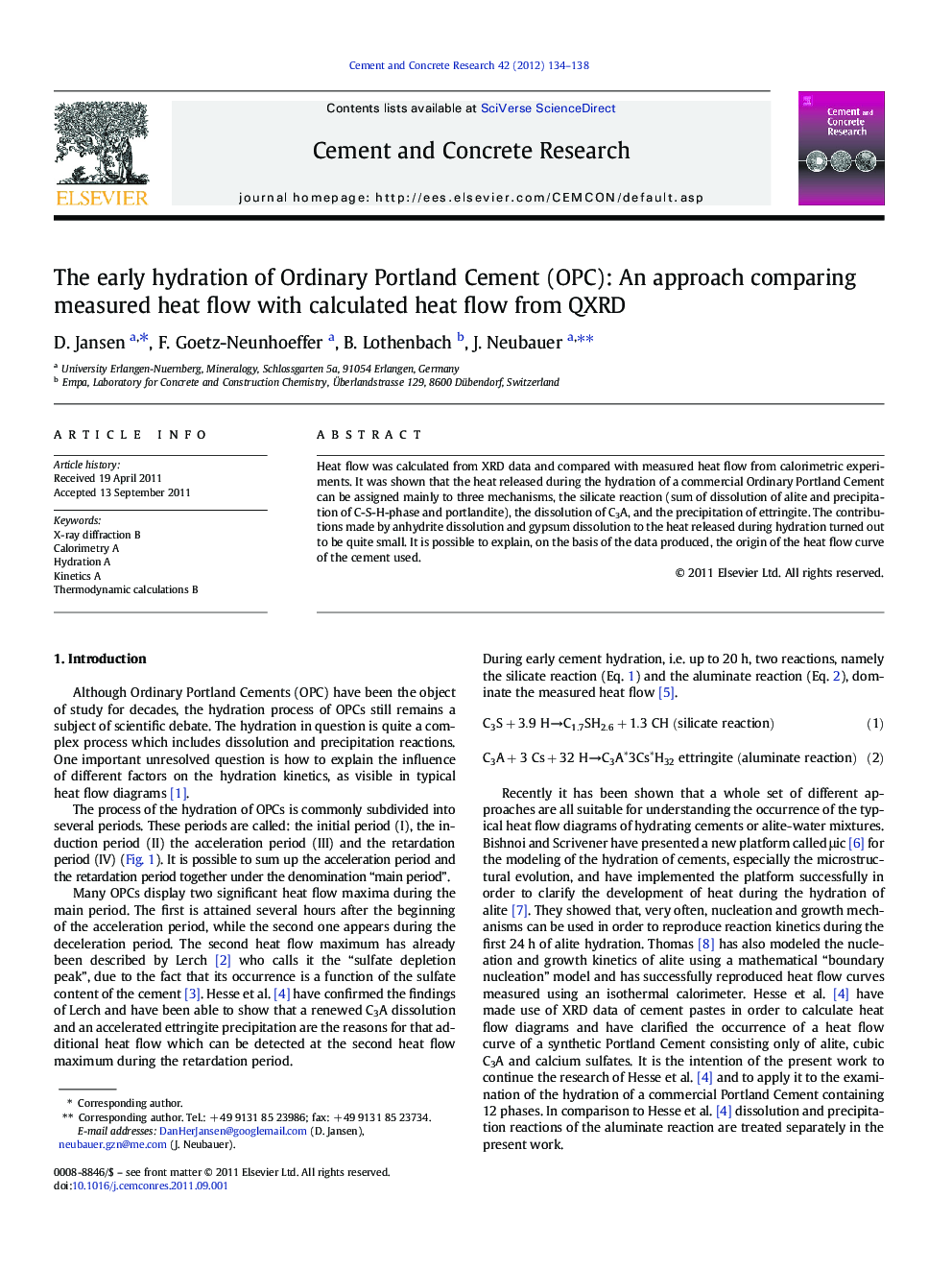| Article ID | Journal | Published Year | Pages | File Type |
|---|---|---|---|---|
| 1456706 | Cement and Concrete Research | 2012 | 5 Pages |
Abstract
Heat flow was calculated from XRD data and compared with measured heat flow from calorimetric experiments. It was shown that the heat released during the hydration of a commercial Ordinary Portland Cement can be assigned mainly to three mechanisms, the silicate reaction (sum of dissolution of alite and precipitation of C-S-H-phase and portlandite), the dissolution of C3A, and the precipitation of ettringite. The contributions made by anhydrite dissolution and gypsum dissolution to the heat released during hydration turned out to be quite small. It is possible to explain, on the basis of the data produced, the origin of the heat flow curve of the cement used.
Related Topics
Physical Sciences and Engineering
Engineering
Industrial and Manufacturing Engineering
Authors
D. Jansen, F. Goetz-Neunhoeffer, B. Lothenbach, J. Neubauer,
